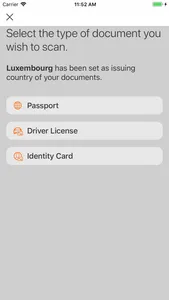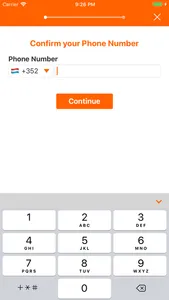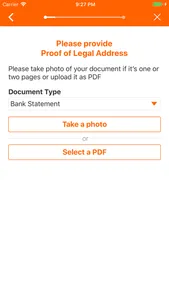The SnaproveEasy app allows to perform a remote KYC data collection for a company that is subscribed to the services of SnapSwap (https://snapswap.eu/digital-onboarding.html). A company (that is a client of SnapSwap) on its website can offer an end-user (customer of the company) an option to complete a KYC data collection process with the SnaproveEasy mobile app.
The data collection process in SnaproveEasy only begins when properly initialized: an end-user is supposed to scan a QR code generated for him on the company's web-site.
In SnaproveEasy mobile app an end-user can:
1. scan a valid ID document with her web-camera
2. perform identity verification: face match is performed between a photo of an end-user taken by the app in real-time and a photo found on ID document
3. provide current residential address
4. upload or scan with her web-camera a proof of residence
5. answer additional questions relevant to the data collection process
6. review collected information
7. submit collected information to the target institution
If all necessary data entries are successfully collected and processed then the company that referred the user to SnaproveEasy app receives a data delivery via a server-to-server data transfer.
The data collection process in SnaproveEasy only begins when properly initialized: an end-user is supposed to scan a QR code generated for him on the company's web-site.
In SnaproveEasy mobile app an end-user can:
1. scan a valid ID document with her web-camera
2. perform identity verification: face match is performed between a photo of an end-user taken by the app in real-time and a photo found on ID document
3. provide current residential address
4. upload or scan with her web-camera a proof of residence
5. answer additional questions relevant to the data collection process
6. review collected information
7. submit collected information to the target institution
If all necessary data entries are successfully collected and processed then the company that referred the user to SnaproveEasy app receives a data delivery via a server-to-server data transfer.
Show More




